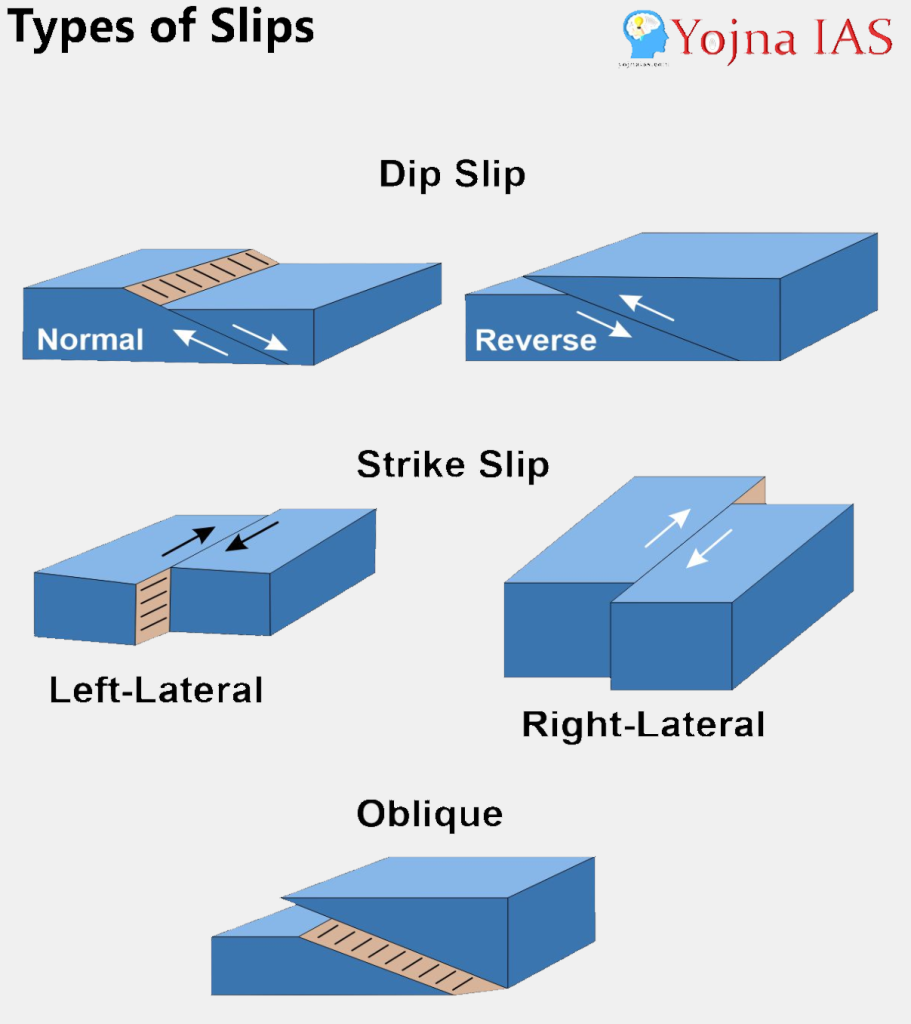13 Sep 2023 Earthquakes
This article covers “Daily Current Affairs” and the topic details “Earthquakes”. This topic has relevance in the “Geography” section of the UPSC CSE exam.
For Prelims:
What is Earthquake?
What are its causes?
For Mains:
GS1: Geography
Why in the news?
On September 8th, Morocco was struck by the most devastating earthquake ever recorded, claiming the lives of over 2,400 individuals and reducing numerous residences and structures to debris.
Understanding Earthquakes:
- Definition: An earthquake is a powerful shaking of the Earth’s surface triggered by movements beneath its crust.
- Hypocentre: The point beneath the Earth’s surface where the earthquake originates is the hypocentre.
- Epicentre: The epicentre is the location directly above the hypocentre on the Earth’s surface.
- Cause: Earthquakes occur when two tectonic plates abruptly slide past each other, releasing accumulated elastic strain energy. This energy transforms into seismic waves, resulting in ground shaking.
- Measurement: Earthquakes are assessed using various scales:
- Moment Magnitude Scale (Mw): Measures the total moment release based on fault movement distance and force.
- Richter Scale (Magnitude Scale): Gauges energy released, ranging from 0 to 10.
- Intensity Scale/Mercalli Scale: Evaluates visible damage on a scale from 1 to 12.
- Earthquakes pose a significant challenge as they cannot be predicted accurately, and no early warning systems currently exist.
More About Morocco Earthquake:
- Epicentre and Magnitude: The earthquake’s epicentre was situated in the High Atlas Mountain range, approximately 72 kilometres from Marrakech. It registered a magnitude of 6.8, categorising it as a “strong” earthquake.
- Shallow Depth: Notably, the quake occurred at a relatively shallow depth beneath the Earth’s surface. According to the US Geological Survey (USGS), the focus was recorded at 18.5 km, while Morocco’s seismic agency estimated it at 11 km. Shallow earthquakes are more destructive as they transfer greater energy to the surface than deeper quakes.
- While earthquakes of this size are infrequent in the region, they are not unprecedented. The US Geological Survey notes Morocco has experienced immense, damaging earthquakes in the western Mediterranean.

Understanding the Morocco Earthquake Cause:
- Tectonic Plate Convergence: The seismic activity in Morocco can be attributed to the northward convergence of the African plate with respect to the Eurasian plate along a complex plate boundary.
- Faulting Explanation: The earthquake resulted from oblique-reverse faulting occurring at a shallow depth within the Moroccan High Atlas Mountain range.

What is Faulting?
-
- Fault Definition: A fault represents a fracture or zone of fractures between rock blocks, enabling their relative movement, and potentially causing earthquakes during rapid shifts.
- Fault Types: Faults are classified based on their dip (angle with respect to the surface) and slip direction:
- Dip-Slip Faults: These move along the dip plane direction.
- Strike-Slip Faults: They exhibit horizontal movement.
- Oblique-Slip Faults: Combining characteristics of dip-slip and strike-slip faults.
- Reverse Faulting: This term denotes a situation where the upper block, positioned above the fault plane, moves upward and over the lower block.
- Oblique-Reverse Faulting: Also known as oblique-thrust faulting, this geological fault ing type involves vertical and horizontal movement of rocks on one side of the fault plane due to compressional forces. It is frequently observed in areas where tectonic plates converge.
Earthquake Vulnerability in India:
- Geographical Location: India’s landmass is penetrating into the Eurasian plate, making the country prone to earthquakes of moderate to very high intensity.
- Seismic Zoning: According to the Bureau of Indian Standards (BIS), more than 58.6 per cent of India’s landmass is prone to earthquakes of moderate to very high intensity. The seismic zoning in India was revised after the Killari earthquake in 1993, with the low hazard zone or Seismic Zone I being merged with Seismic Zone II.
- Population Density and Urbanization: Densely populated areas, extensive unscientific constructions, and unplanned urbanisation have increased risks associated with earthquake hazards.
- Specific Regions: The Andaman & Nicobar Islands frequently experience damaging earthquakes due to being situated on an inter-plate boundary. Regions in the Himalayan foothills are vulnerable to liquefaction and landslides due to earthquakes.
Challenges in Earthquake Prediction:
- Predictive Complexity: Accurately forecasting earthquakes necessitates the detection of preliminary signals originating from within the Earth, signifying an impending significant seismic event. Additionally, these signals must exclusively manifest before major earthquakes, avoiding false alarms for minor surface movements.
- Equipment Limitations: Currently, the absence of appropriate equipment capable of identifying such precursory signals poses a significant hurdle in earthquake prediction, even if these signals indeed exist.
Yojna daily current affairs eng med 13th Sep 2023
Q1. What geological faulting type involves vertical and horizontal movement of rocks on one side of the fault plane due to compressional forces and is frequently observed in areas where tectonic plates converge?
(a) Dip-slip faulting
(b) Strike-slip Faulting
(c) Oblique- reverse Faulting
(d) Normal Faulting
ANSWER: (c)
Q2. Consider the following statements about earthquakes:
- The hypocentre is the point on the Earth’s surface directly above the earthquake’s origin.
- The Richter Scale measures visible damage caused by an earthquake.
- The Moment Magnitude Scale (Mw) measures the total moment release based on fault movement distance and force.
How many of the statements are correct?
(a) Only one
(b) Only two
(c) All three
(d) None
ANSWER: (a)
Q3. In light of recent earthquakes in Morrocco, discuss the Geological and Geographical Factors Influencing Earthquake Vulnerability in India.


No Comments